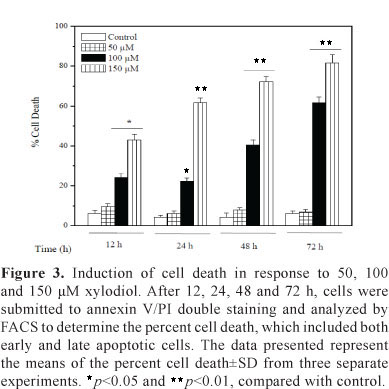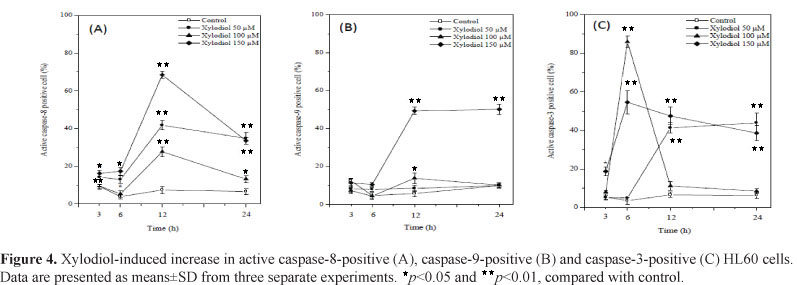An atisane diterpene was isolated from Xylopia langsdorfiana St. Hilaire & Tulasne, Annonaceae, leaves, ent-atisane-7α,16α-diol (xylodiol). Preliminary study showed that xylodiol was cytotoxic and induced differentiation on human leukemia cell lines. However, the molecular mechanisms of xylodiol-mediated cytotoxicity have not been fully defined. Thus, we investigated the anti-tumor effect of xylodiol in human leukemia HL60 cell line. Xylodiol induced apoptosis and necrosis. HL60 cells treated with xylodiol showed biochemical changes characteristic of apoptosis, including caspases-8, -9 and -3 activation and loss of mitochondrial transmembrane potential (∆ Ψm). However, there was a condensation rather than swelling of mitochondria. Moreover, the formation of condensed mitochondria and the loss of ∆ Ψm occurred downstream of caspase activation. Cyclosporine A did not protect HL60 cells from the cytotoxic effects of xylodiol, suggesting that the loss of ∆ Ψm is a late event in xylodiol-induced apoptosis. Oxidative stress was involved in xylodiol-induced apoptosis. Thus, we conclude that activated caspases cleave cellular proteins resulting in mitochondrial damage leading to mitochondrial condensation, loss of ∆ Ψm and ROS release from the mitochondria. ROS can further induce and maintain a collapse of ∆ Ψm leading to cellular damage through oxidation of lipids and proteins resulting in apoptotic cell death.
apoptosis; caspases; mitochondrial transmembrane potential; Xylopia langsdorfiana; xylodiol










